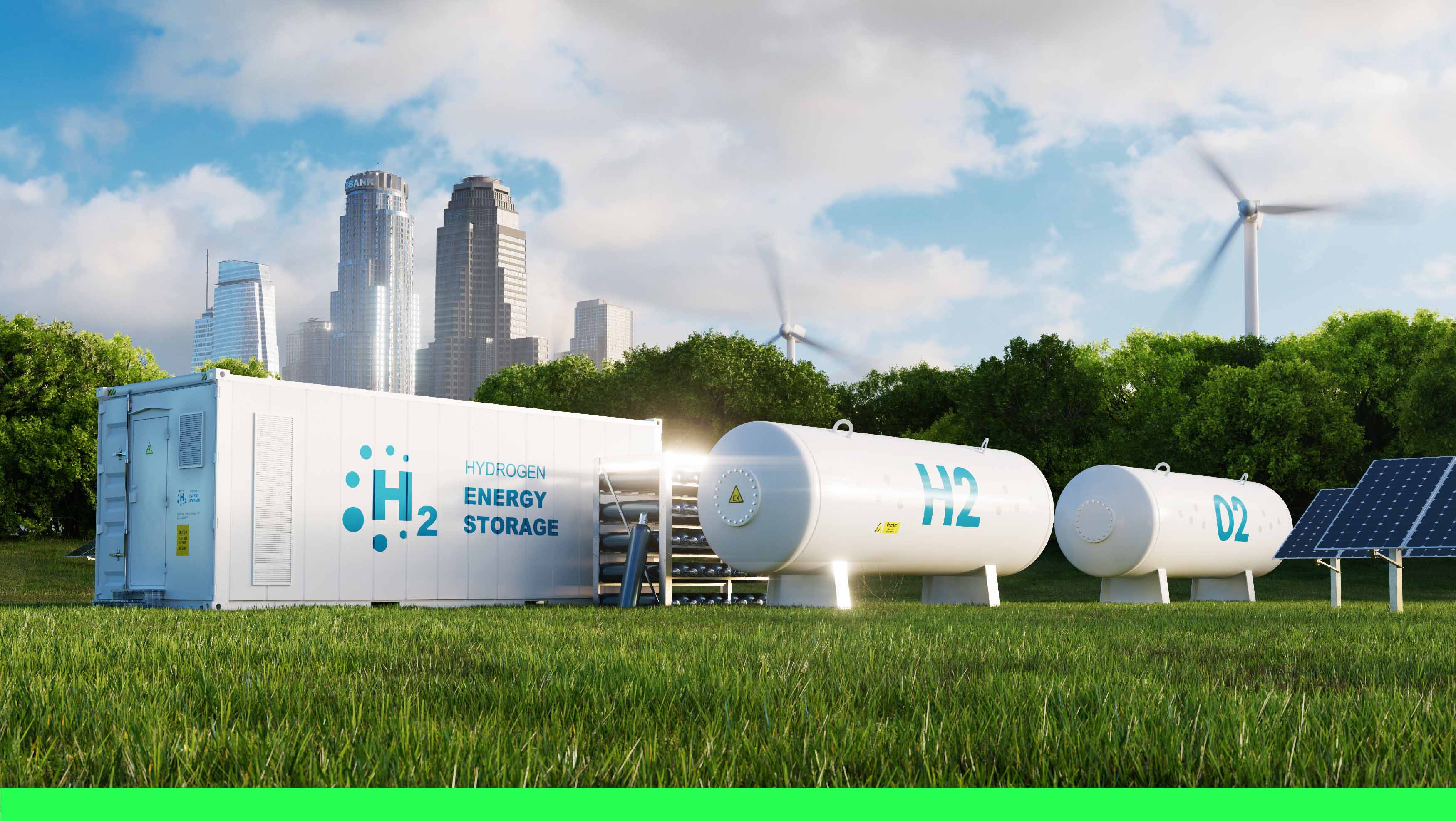
The Future of Green Hydrogen: A Pathway to Net-Zero Economy

Co-authored by Nicole Haghpanah, EDPR NA DG & Antonio Fayad, EDPR H2 Strategy & Origination
As heatwave temperatures soar across the globe this summer the race to accelerating decarbonization undeniably persists. Now more than ever, it is important that we prioritize an energy transition that puts renewable energy at the forefront across the entire economy. In an effort to shift away from fossil fuels, EDP Renewables North American distributed generation team believes that the introduction of hydrogen, specifically green hydrogen co-located by distributed solar, can play a vital role. But how far are we with implementing green hydrogen on our path toward a net-zero future? Hydrogen is the smallest, yet most abundant, element in the universe that can be used as a clean alternative to fossil fuel. While difficult to find in its pure form, it is most commonly found in water. As a result, to obtain hydrogen it must be produced using industrial-based practices, but its carbon footprint varies significantly depending on the specific processes and energy sources used. Simply putting it, renewable hydrogen is hydrogen produced without CO2 emissions across its entire production lifecycle. One of the most common simplification to the lifecycle emissions measurement are the different hydrogen “colors:” green, gray and blue. Among the several “colors,” green hydrogen is the only option compatible with a carbon neutral economy. Gray hydrogen is produced from steam methane reforming (SMR) using fossil fuels, and blue hydrogen adds carbon capture and storage solutions to the SMR process to reduce CO2 emissions. Green hydrogen is made through electrolysis, a process by which electricity, in this case generated by renewable energy, is used to separate hydrogen molecules from oxygen. Consequently, this process driven by clean energies, is done without emitting any CO2 into the atmosphere.
How can green hydrogen be used?
The promise of green hydrogen stems from its use-case versatility and abundance. Most notably, it is best used in the “hard to abate” sectors looking for onsite energy alternatives and energy storage.
Onsite Energy Opportunities
Some of the most energetically intensive sectors represent some of the largest sources of global carbon emissions. These industries include the production of steel, cement and fertilizers, aviation, maritime and long distance road transportation. As such, these processes are “hard to abate” because there are few clean alternatives that are technically viable and cost competitive to replace their current energy sources, typically oil and gas. Green hydrogen’s versatility to be used as a feedstock and an energy carrier, and its chemical properties that can parallel with hydrocarbons, puts green hydrogen in a unique position as a clean, reliable replacement energy source.
Grid Application and Storage
Given hydrogen energy density and the existing technology to store large quantities of energy in gaseous or liquefied form, hydrogen has a large potential to provide long-term energy storage. Unlike batteries, which at present can only store energy in the short term, hydrogen can store energy for the longer durations. In many areas of the U.S. electricity grid, lack of transmission infrastructure causes renewable curtailment. Often times, this power is lost or used for battery storage. This excess power could be used to produce more green hydrogen via electrolysis, thus complementing electricity and increasing the efficiency of the system as a whole. As renewables continue to penetrate the grid, intermittency issues will likely increase, giving green hydrogen a critical role as a storage resource for periods when renewable electricity is less available.
Kickstarting the hydrogen economy in the U.S.
At present, while the cost of energy is expected to fall in the coming years, the production of green hydrogen is still too expensive to achieve meaningful scale. However, there are governmental initiatives promoting technological and business model improvements to make green hydrogen cost competitive with other fuel sources. Two of these programs in the U.S. are the U.S. Department of Energy’s Hydrogen Shot and H2Hubs. The Hydrogen Shot is an initiative aimed at establishing the framework for hydrogen deployment through the American Jobs Plan. The goal is to ultimately reduce the renewable energy costs of hydrogen by 80% to establish new markets for hydrogen, create more clean energy jobs and reduce greenhouse gas emissions. The Infrastructure Investment and Jobs Act (IIJA) has allocated ~$8b for the development of at least four H2Hubs across the United States. The goal of the H2Hubs is to accelerate the use of hydrogen as an energy carrier by establishing networks of producers and consumers. With the help of government incentives, hydrogen has the power to bring down the cost curve and become a real, viable energy vector.
What’s next for green hydrogen?
As the industry for green hydrogen continues to evolve, market forces such as supply and demand, grid reliability, the increasing need for energy storage and the search for more sustainable industrial practices will influence the adoption of green hydrogen. Nonetheless, a sound policy framework to support visibility on investments in carbon neutral technologies is required to foster breakthroughs in electrolysis technology and continuing cost declines of renewables. This will be key to drive down the levelized cost of green hydrogen production to par or below that of oil and gas. As we continue moving toward a net zero economy, hydrogen will undoubtably play a vital role in reaching our renewable goals and become a widely used energy carrier and fuel in the global economy. Want to learn more about EDPR’s work on Hydrogen? Check out the H2 Business Unit here.
Contact information:
Nicole Haghpanah, Development, nicole.haghpanah@edp.com
Antonio Fayad, H2 Strategy & Origination, antonio.fayad@edp.com